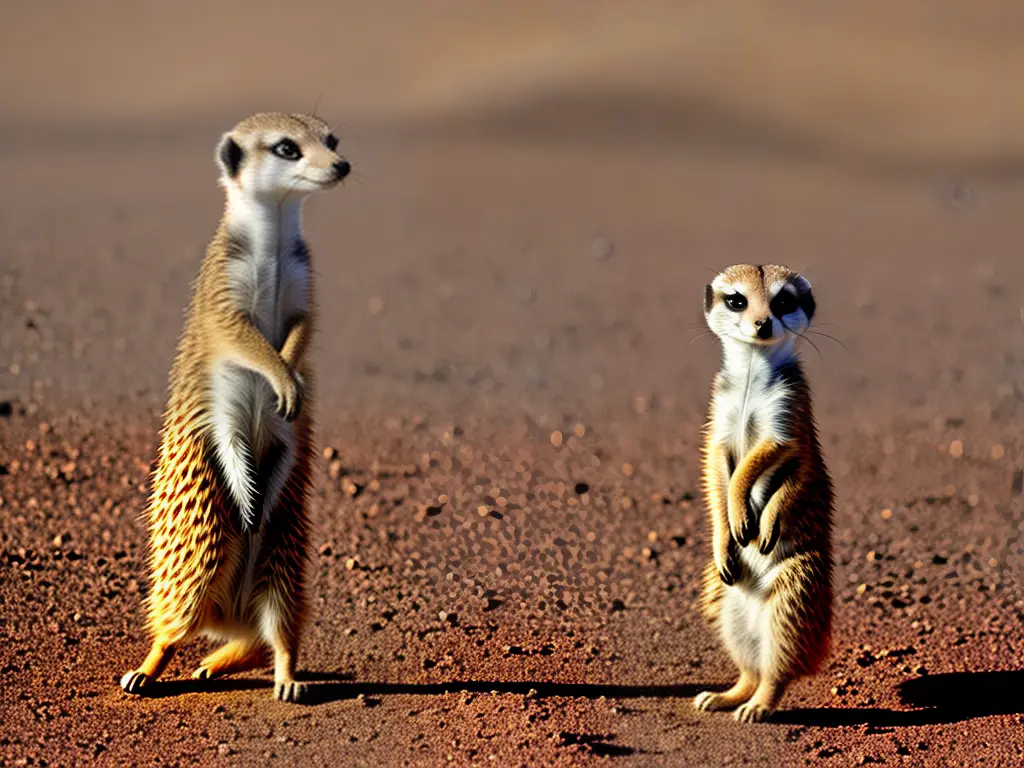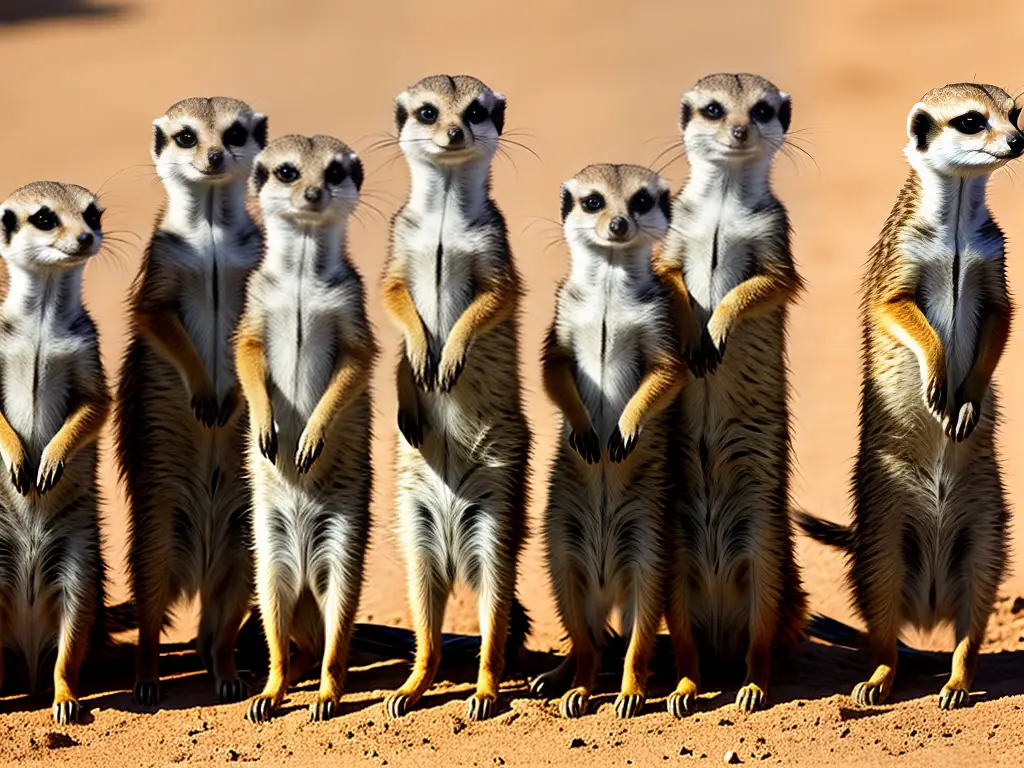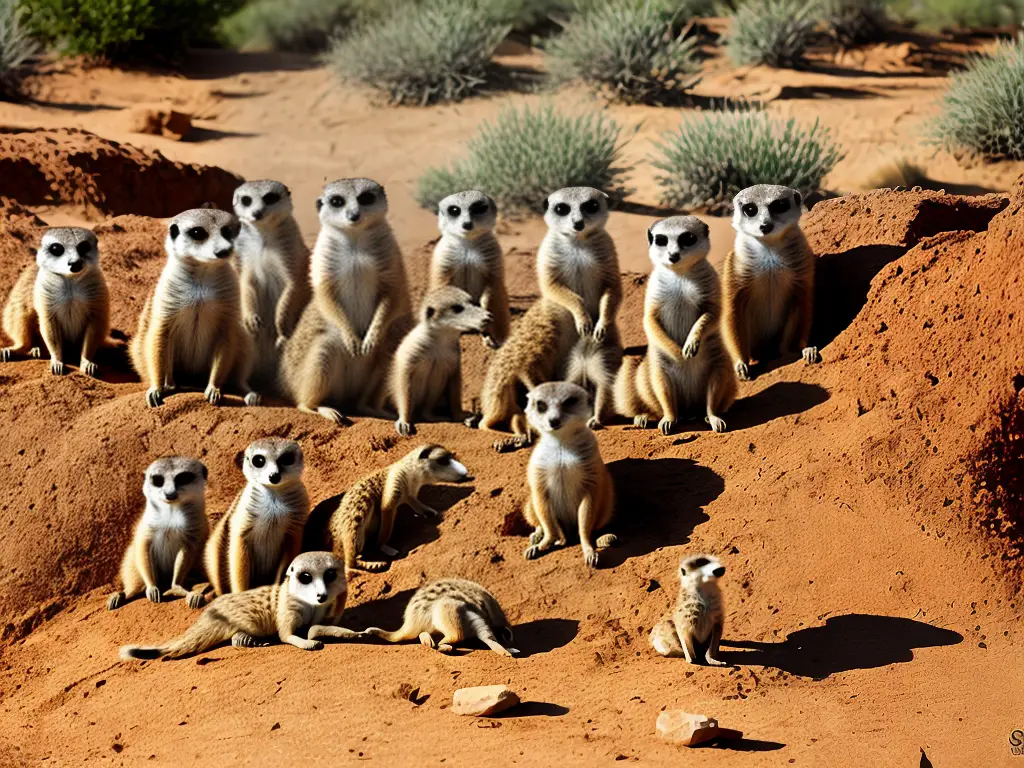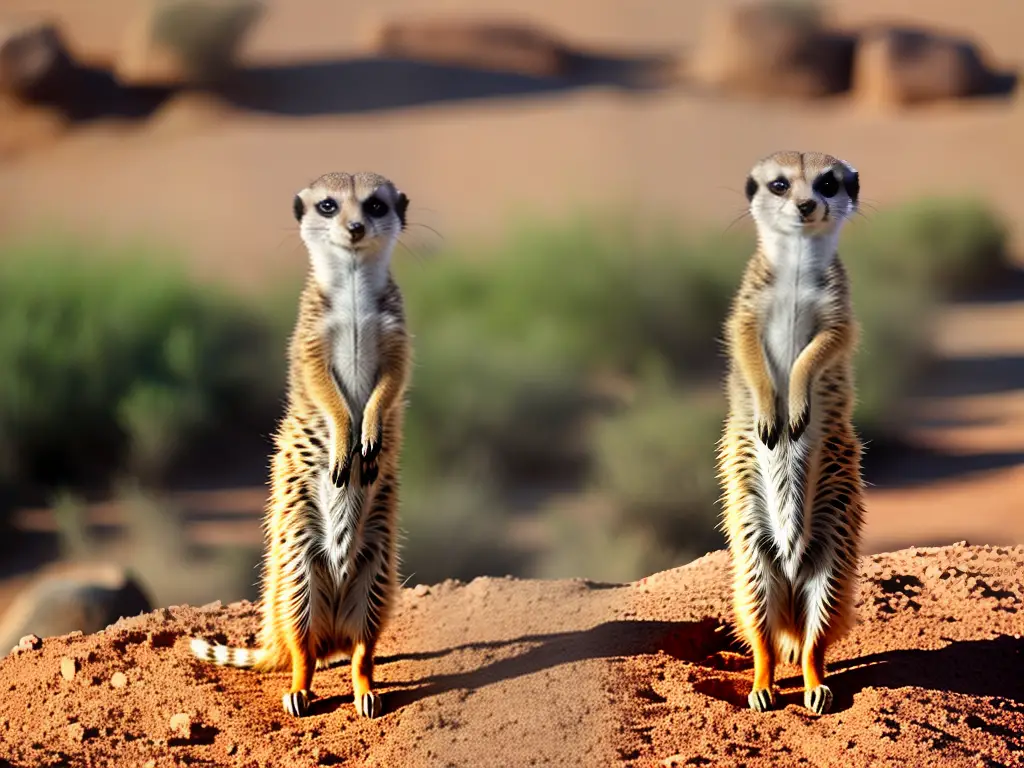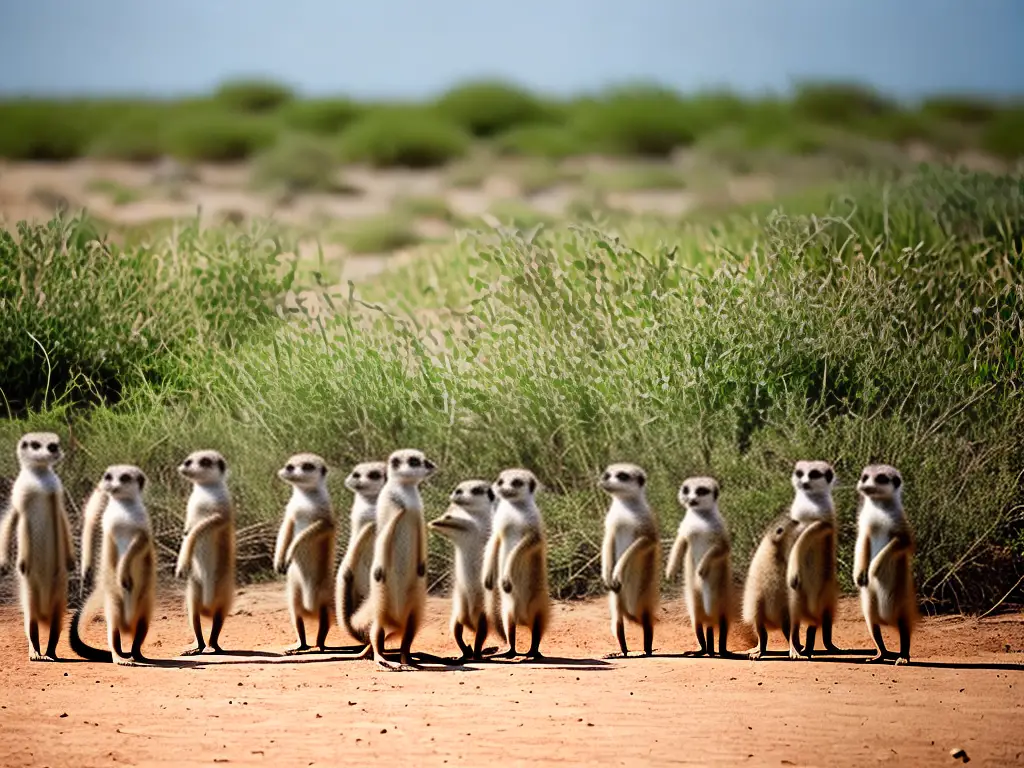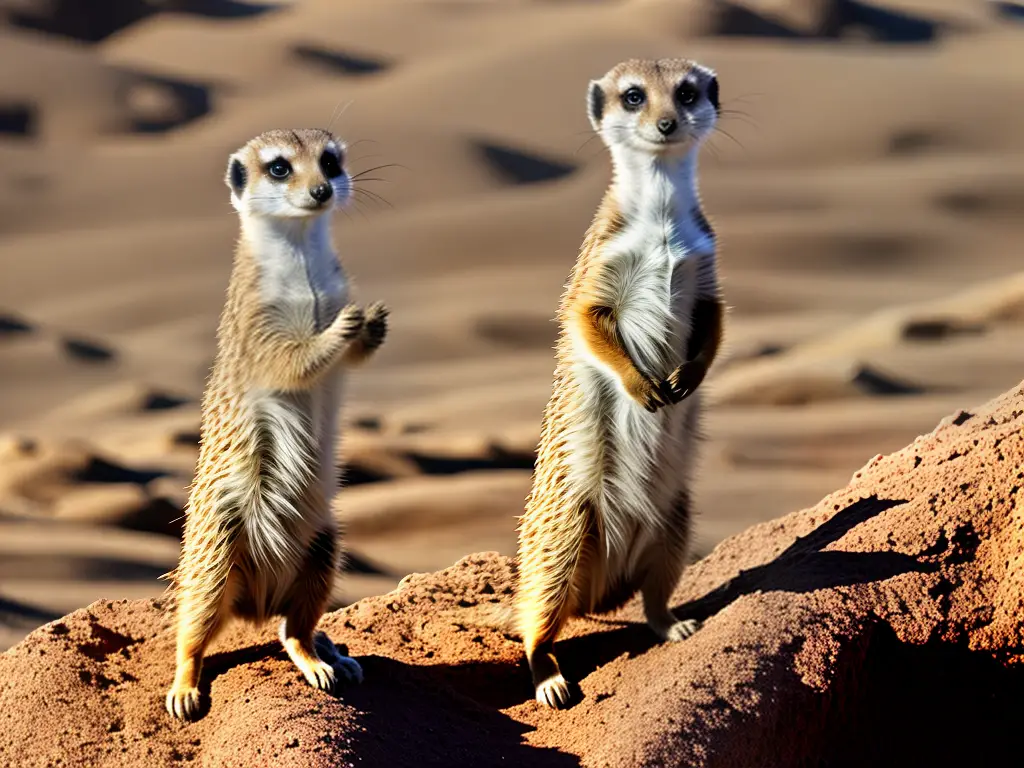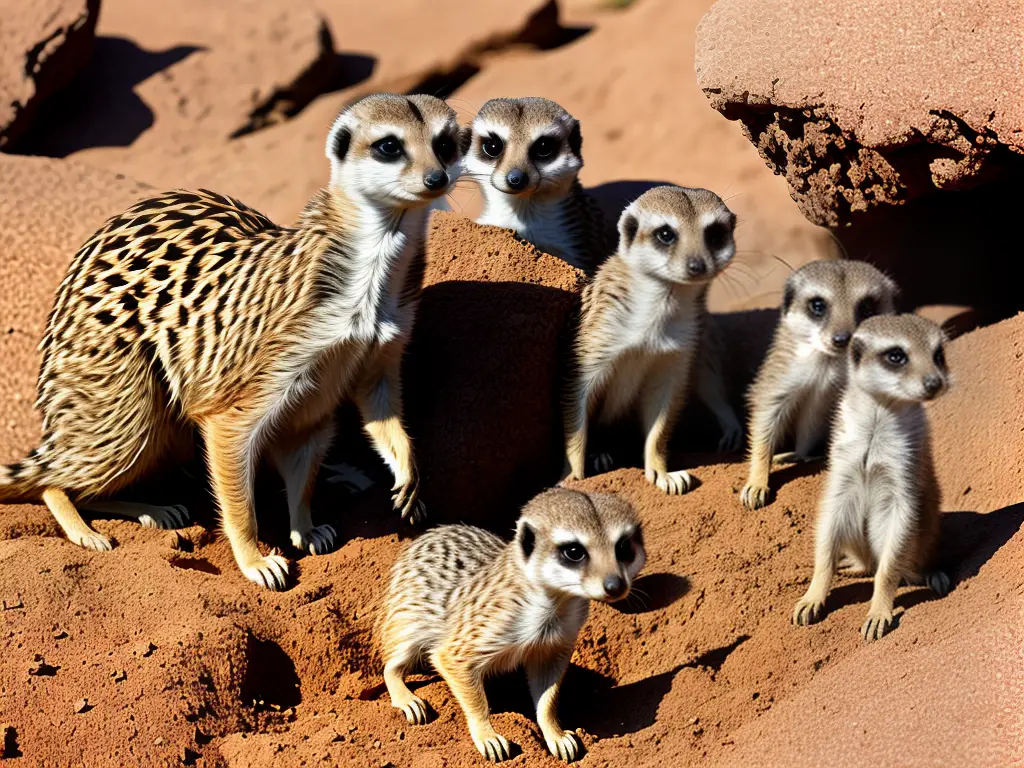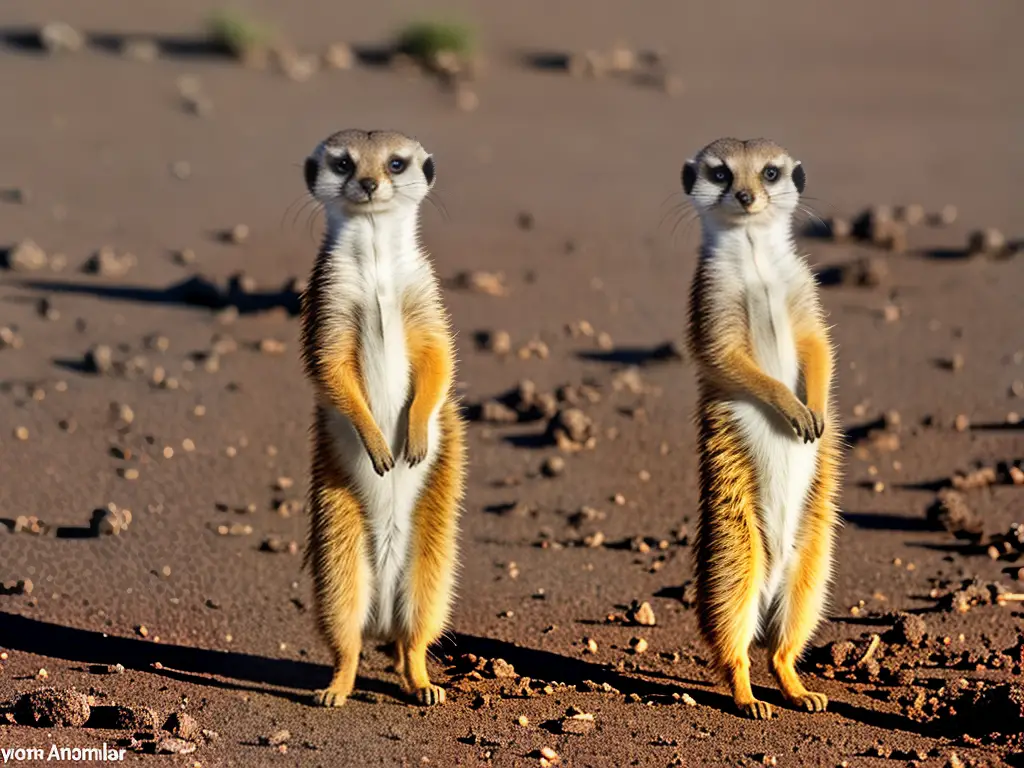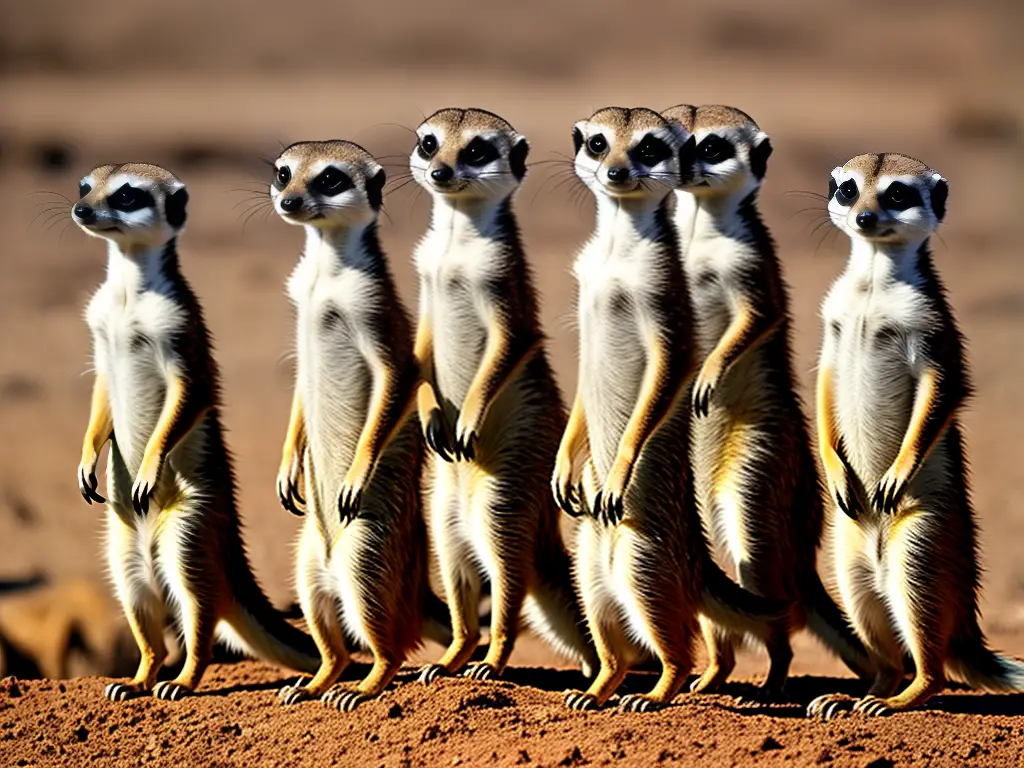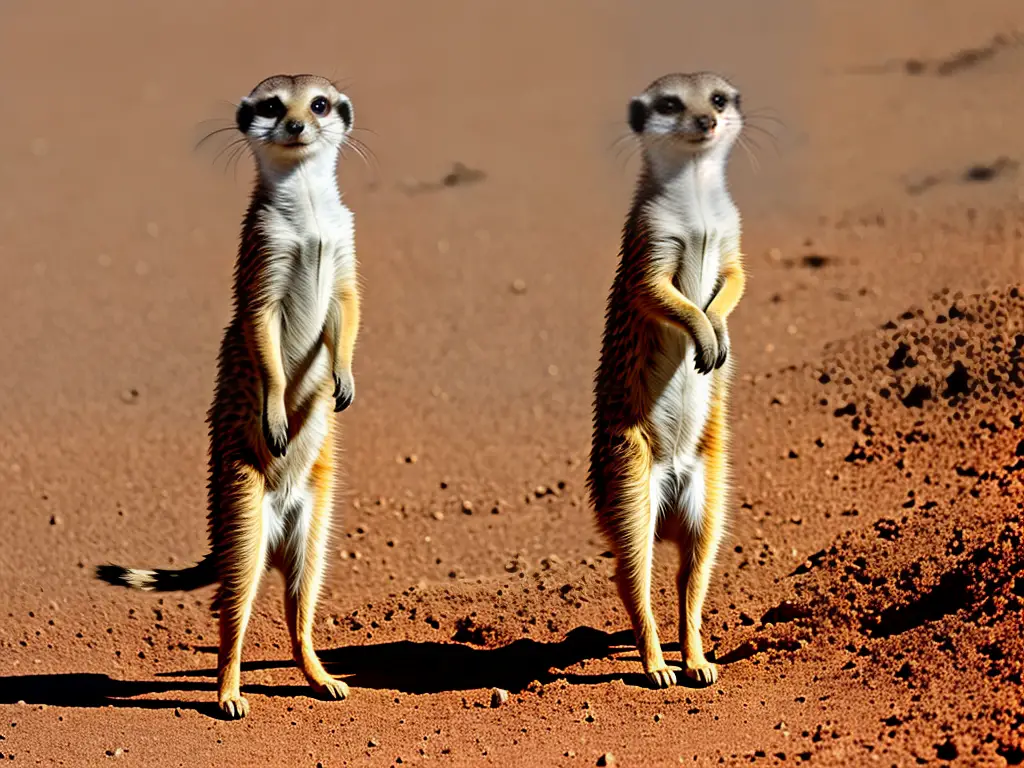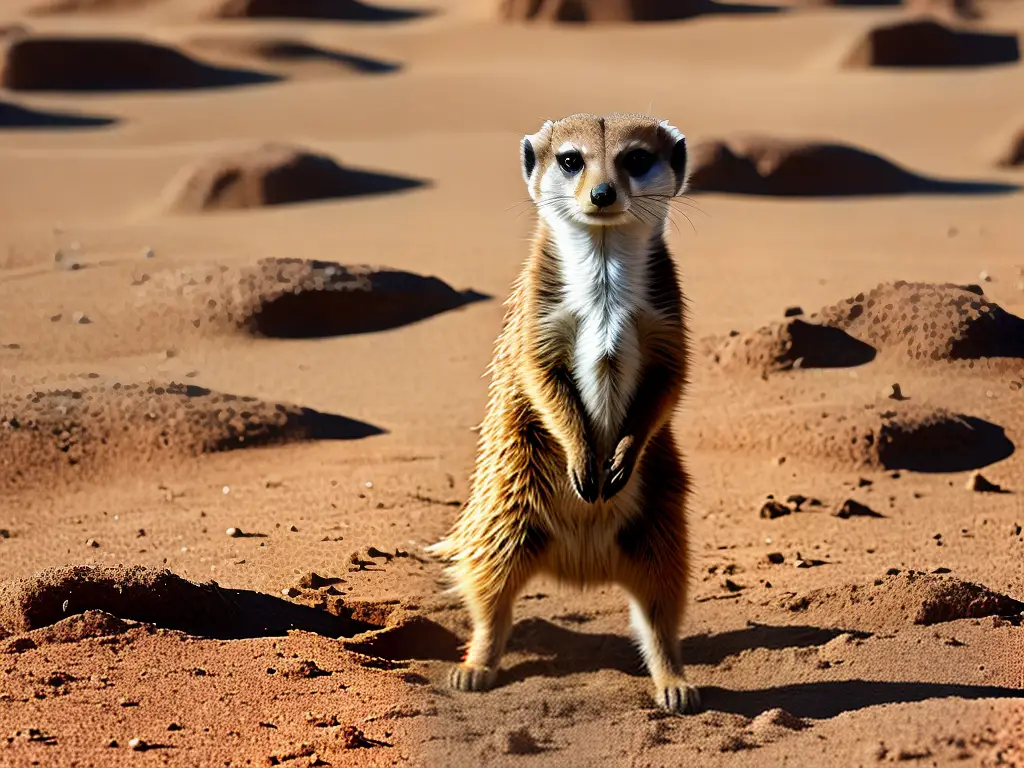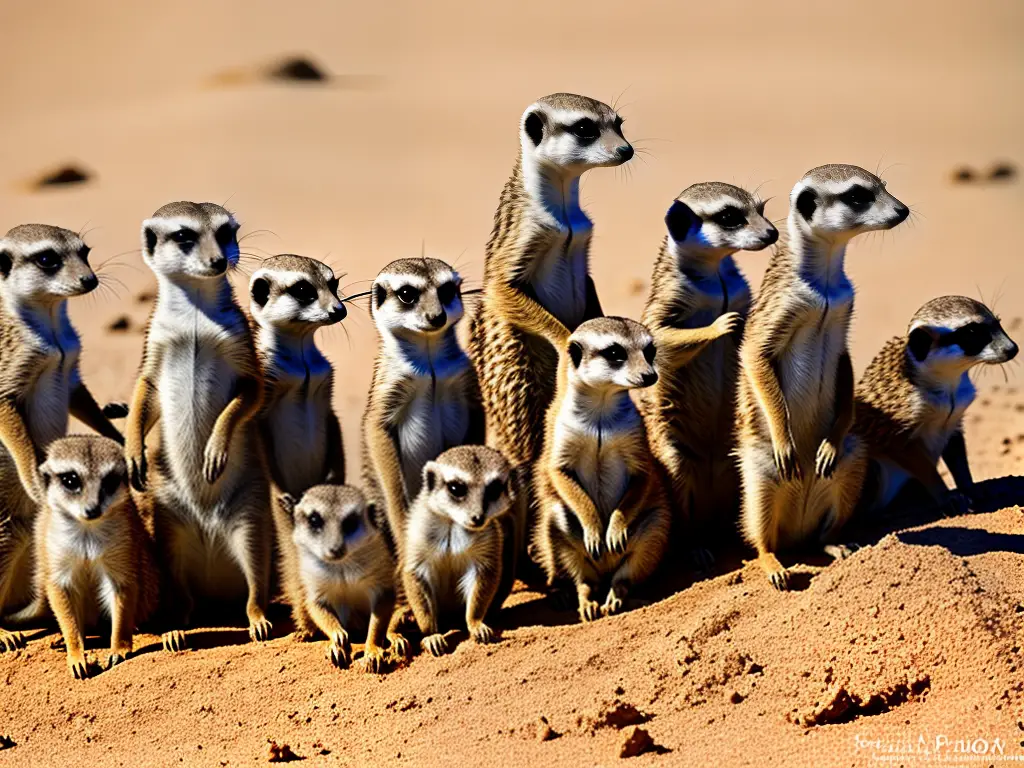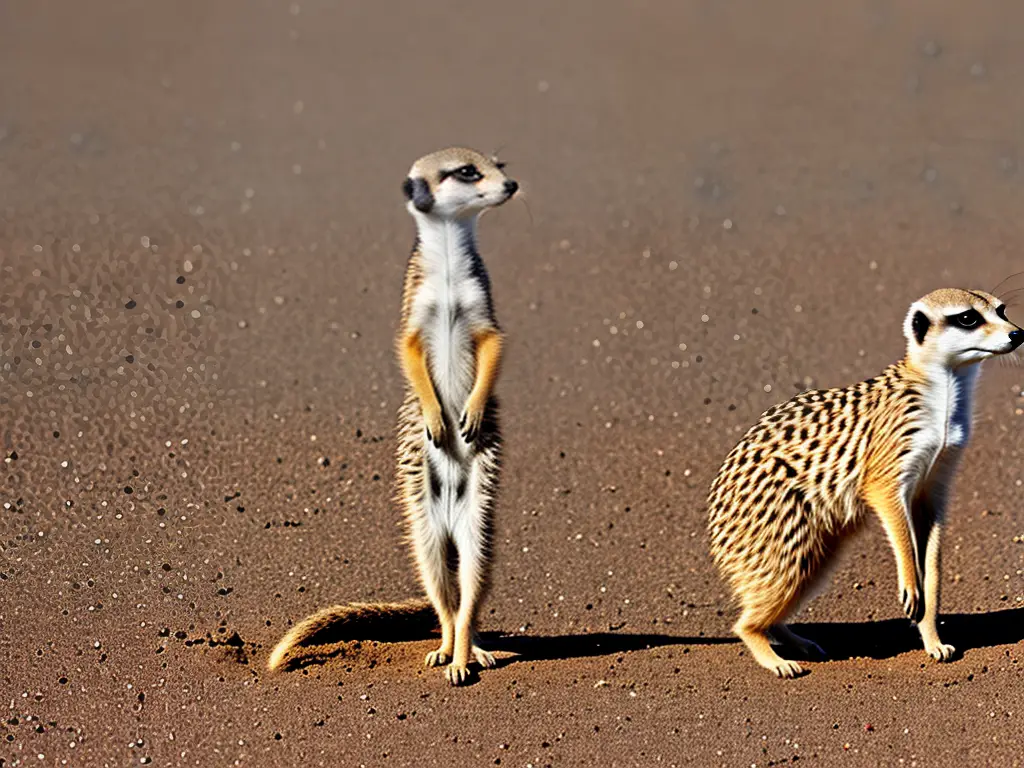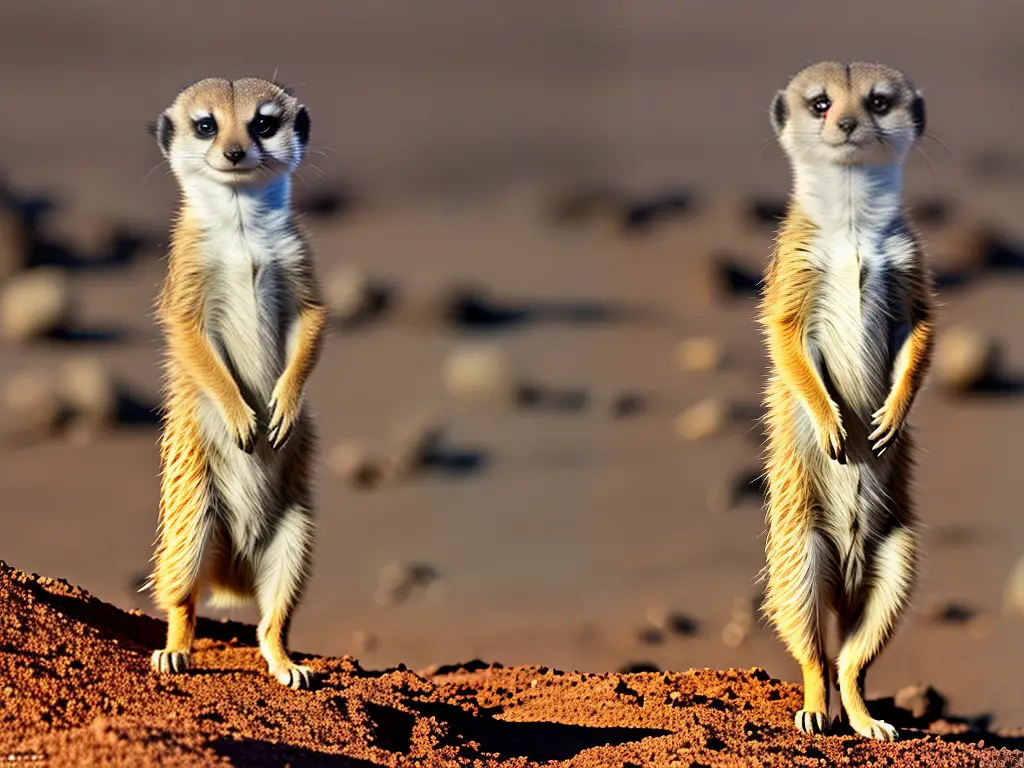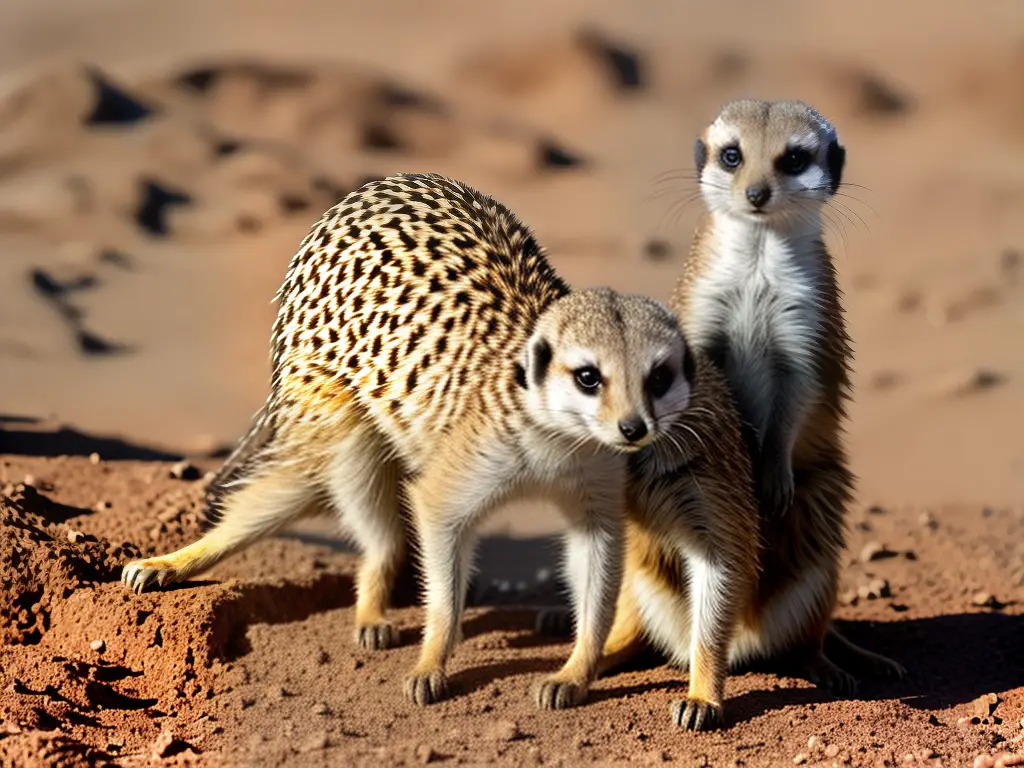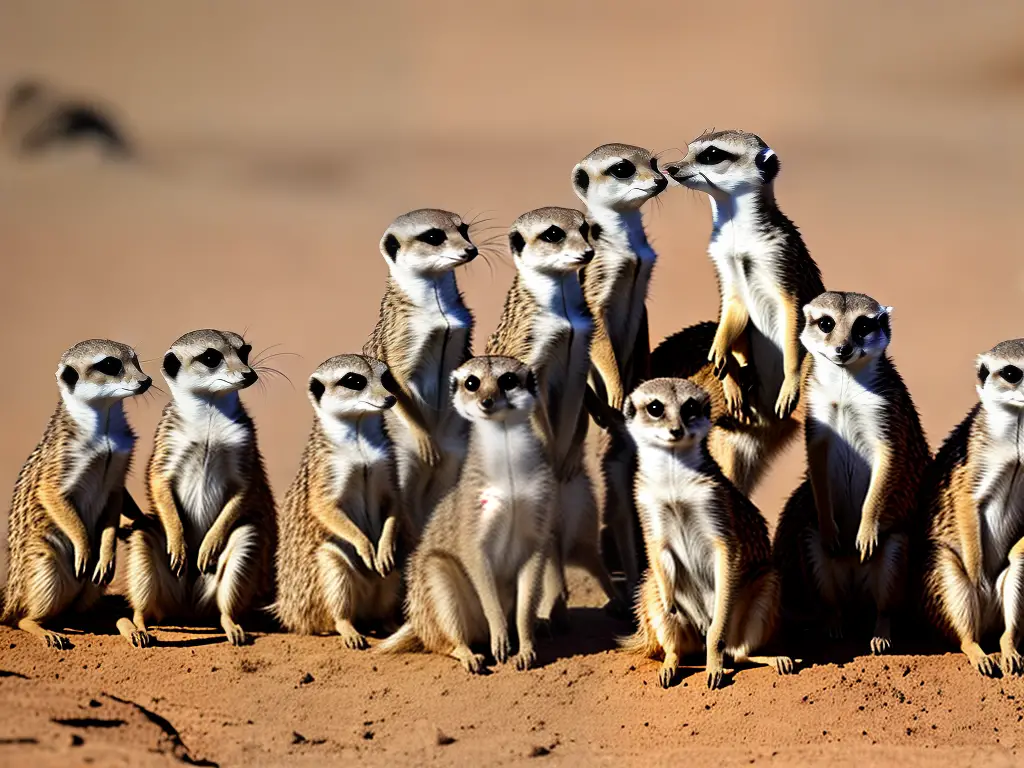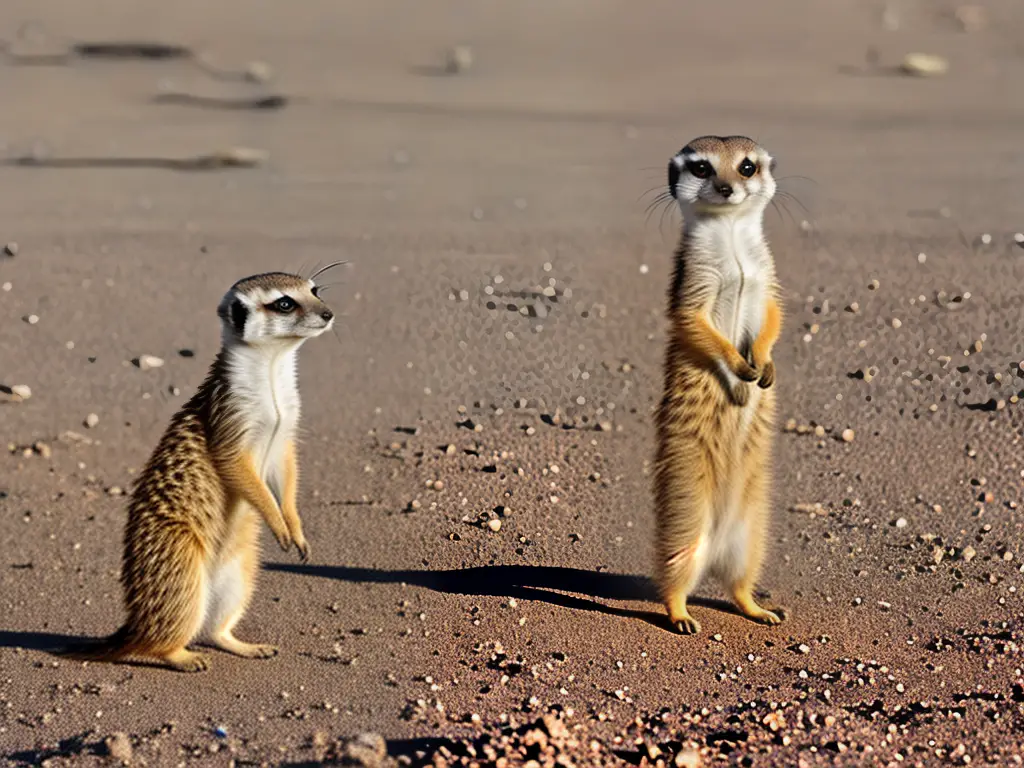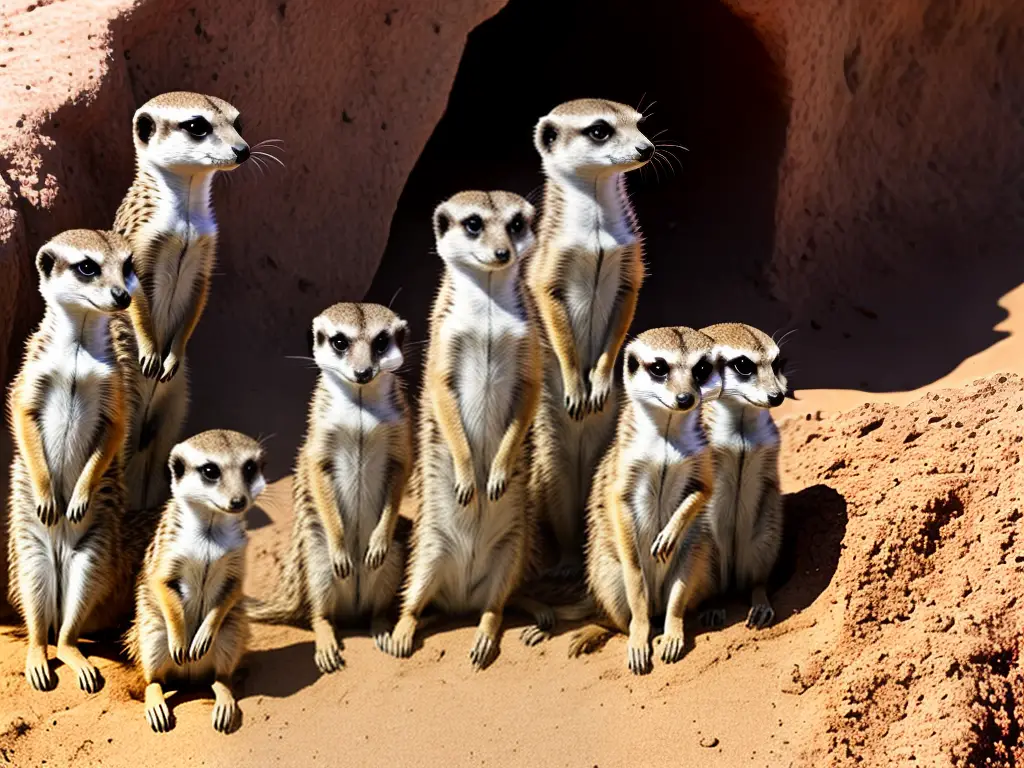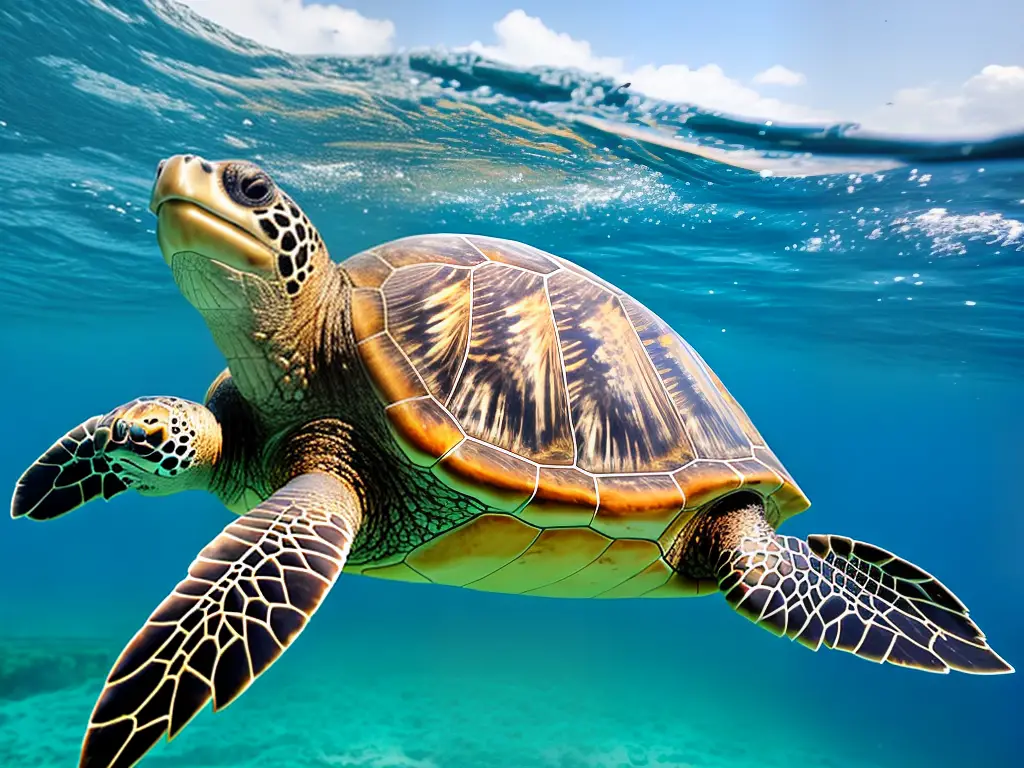Meerkats are fascinating creatures that have captured the hearts of many due to their playful and social nature. These small mammals thrive in a variety of habitats, have adapted to live on a specific diet, and live in complex social structures that contribute to their life expectancy. The meerkat’s survival in the wild is also dictated by various predators and threats, as well as their reproductive habits. To preserve these incredible animals, conservation efforts are vital in maintaining their habitat and ensuring their longevity in the wild.
Meerkat Habitat: Home of the Meerkats
Meerkats are fascinating animals that belong to the mongoose family. They can be found in the southern parts of Africa, particularly in the Kalahari Desert, which stretches across Botswana, Namibia, and South Africa. Meerkats have adapted to live in the harsh environment of the desert, and their habitat plays a significant role in their life expectancy.
These small mammals typically reside in areas with open, flat, and dry terrain. They require a habitat that has a specific mix of plants and animals for them to thrive. In the wild, meerkats can be found in savannahs, grasslands, and desert scrublands. They often live near acacia trees, as these provide shelter and food for many of the insects and small animals that meerkats eat.
Meerkats are known for their elaborate burrow systems called ‘meerkat manors’. They dig their burrows in the soft, sandy soil of their dry environment, which provides them with protection from predators and the extreme heat of the desert. These burrows consist of multiple entrances, tunnels, and sleeping chambers, where they spend much of their time when they are not foraging for food.
Meerkats are small, agile mammals that live in the deserts of Southern Africa. They are part of the mongoose family and have a diet that primarily consists of insects, small vertebrates, and even some plants. Some of the common insects they eat include beetles, caterpillars, crickets, and termites.
<img src="/wp-content/uploads/images/ ” />
” />
Meerkat Diet: What They Eat and How It Affects Their Life Expectancy
The lifespan of meerkats is affected by various factors, including their habitat. In the wild, these desert-dwelling creatures have a life expectancy of 6 to 7 years, which is influenced by the availability of food, water, and shelter. They face several threats in their harsh surroundings, such as predators, droughts, and human activities. However, when meerkats are cared for in captivity, they can live longer, with some reaching up to 14 years of age.
Meerkats have a unique way of searching for food called ‘foraging’. They spend most of their day digging through the sand and dirt to uncover hidden treats while using their sharp front claws and keen sense of smell. They work together in their social groups called ‘clans’, which helps them keep an eye out for predators as they forage.
The diet of meerkats is high in protein and energy, which is essential for their active lifestyle. Since they live in harsh desert environments, these nutrients allow them to maintain their strength and health. In addition to insects, meerkats will occasionally eat fruits, roots, and tubers, giving them essential vitamins, minerals, and well-rounded nutrition.
Meerkats are fascinating creatures that can live for up to 12-14 years in the wild. Their diet plays a vital role in their overall health and life expectancy, with well-fed meerkats living longer and healthier lives. A nutritious and varied diet contributes significantly to their lifecycle, ensuring they maintain a balanced diet, which keeps them strong, energetic, and able to prosper in their desert habitat.
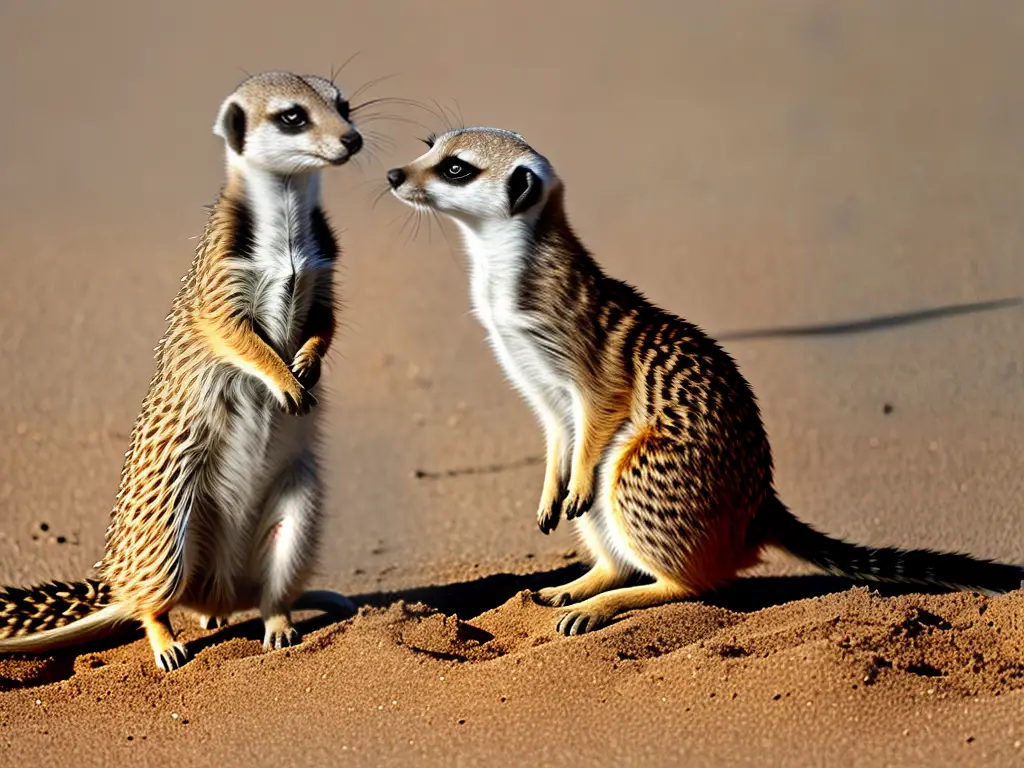
Meerkat Social Structure
Besides their diet, meerkats’ social behavior also greatly influences their life expectancy. They live in tight-knit groups called mobs or gangs, which usually consist of around 20 members, but can sometimes have as many as 50. In these groups, meerkats work together to find food, protect each other, and raise their young, all while living within a shared territory. This cooperative lifestyle enables them to survive and thrive in the harsh environment of the African savannah.
Communication plays an important role in meerkat society. They use a variety of sounds and body language to communicate with each other. Meerkats have specific calls for different situations, such as warning calls to alert others of nearby predators, and they even have specific calls to tell each other if the predator is flying above them or lurking on the ground. They also use scent marking and body language to establish dominance and maintain group cohesion.
In a meerkat group, there is usually one dominant male and one dominant female, who are the leaders and the main breeding pair. The other members of the group help to raise the dominant pair’s offspring, called pups. This means the whole group is invested in the survival and well-being of the pups, increasing their chances of reaching adulthood. Helping the dominant pair with their young also means that the other adults can focus on important tasks like finding food and keeping watch for predators.
Meerkats are small animals that live in the deserts and grasslands of Africa, and they are known for their adorable appearance and playful behavior. These social creatures often live in large groups called ‘gangs’ or ‘mobs’, which plays a significant role in their life expectancy. In general, meerkats can live for around 12 to 14 years, but their chances of survival are greatly increased when they are part of a group.
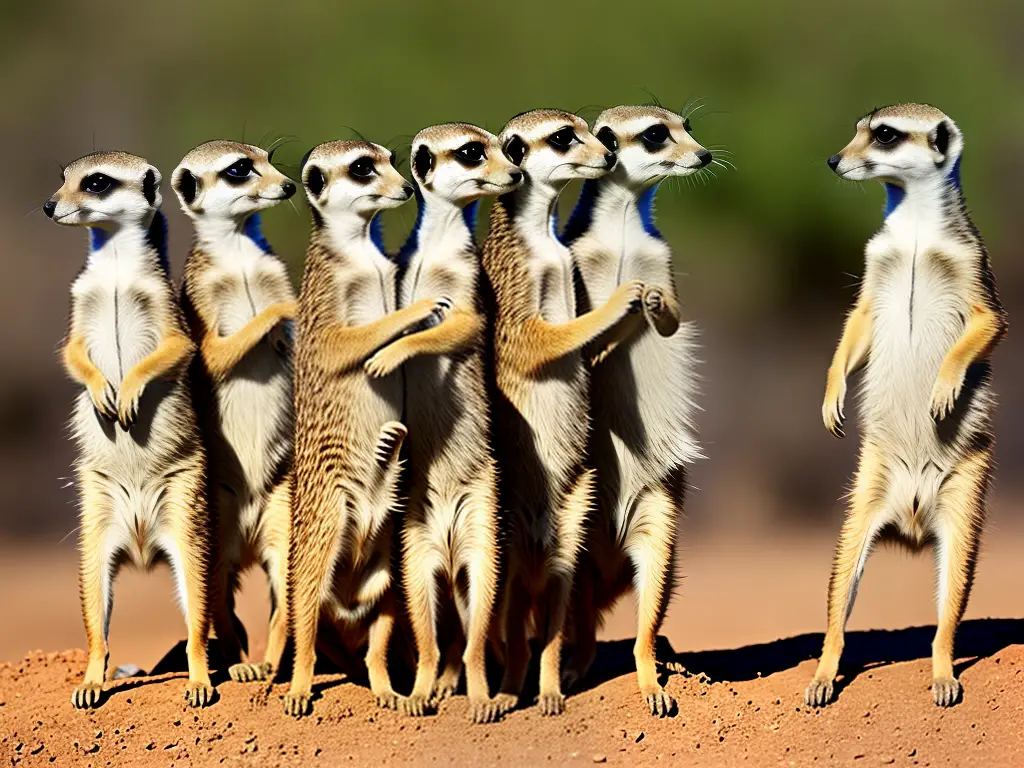
Meerkat Predators and Threats
Being in a group helps meerkats better defend against predators, such as eagles, jackals, and snakes, which are some of the biggest threats they face in the wild. Moreover, living together allows them to share the responsibilities of raising their young and find enough food to support each member. Working together and supporting one another are crucial elements in the social interactions of meerkats that ultimately contribute to their overall life expectancy.
Eagles are one of the most formidable predators that meerkats face. Eagles have exceptional vision and can spot their prey from great distances. Meerkats must always be on the lookout for these predators and move quickly to avoid being swooped up by their sharp talons. To defend themselves against eagles, meerkats take turns keeping watch from a high vantage point while the rest of the group forages for food.
Another common predator of the meerkat is the jackal. Jackals are cunning and sneaky hunters, often stalking their prey before pouncing. Similarly, snakes pose a significant threat to meerkats, particularly venomous species such as the Cape Cobra. To combat these threats, meerkats use their sharp claws and agility to fend off attackers, and they work together as a group to protect their young and vulnerable members.
Meerkats are small mammals mostly found in southern Africa, and they face various environmental threats that can impact their life expectancy, such as climate change, habitat loss, and human intervention. As their natural habitats become more scarce and unpredictable, meerkats may struggle to find food and shelter, thus affecting their survival. However, with their cooperative nature and strong social bonds, meerkats are able to adapt and overcome many of these challenges, allowing them to thrive in their unique environments.
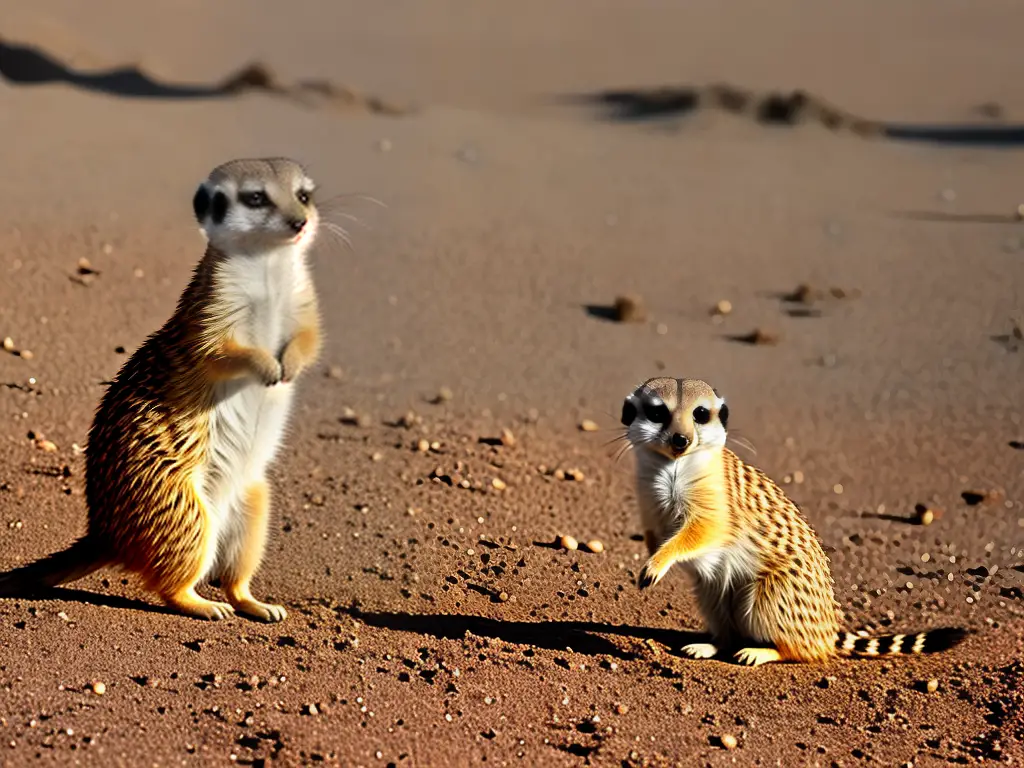
Meerkat Reproduction
One fascinating aspect of meerkats is their reproductive process, which is closely linked to their life expectancy. They usually breed seasonally, with the majority of births occurring during the rainy season when food is most abundant. Pregnant females require a lot of energy and nutrients to carry and deliver their babies, and the rainy season provides the ideal conditions for them to consume enough food. This ensures the continuation of the meerkat population, despite the various environmental challenges they face.
These animals are called ‘cooperative breeders’, with only one dominant female, also known as the ‘alpha female’, and one dominant male, the ‘alpha male’, breeding in each group. The rest of the group members help take care of the babies after they are born. This type of reproduction helps the group as a whole survive and thrive since the non-breeding members contribute to the overall well-being of the entire family.
Parental care among meerkats is also quite unique. After a gestation period of about 11 weeks, the pregnant alpha female gives birth to 2-5 pups. Both the alpha male and other members of the group, called ‘helpers’, play a crucial role in raising and protecting the newborns. The helpers teach the young how to forage, dig, and participate in group activities, while the alpha male helps guard the group and maintain the territory from any potential intruders.
Meerkats are small, social animals found in the deserts of southern Africa. They have become popular due to their unique appearance and interesting behavior. One aspect of their lives to consider is their life expectancy, which is influenced by various factors, such as reproductive behavior.
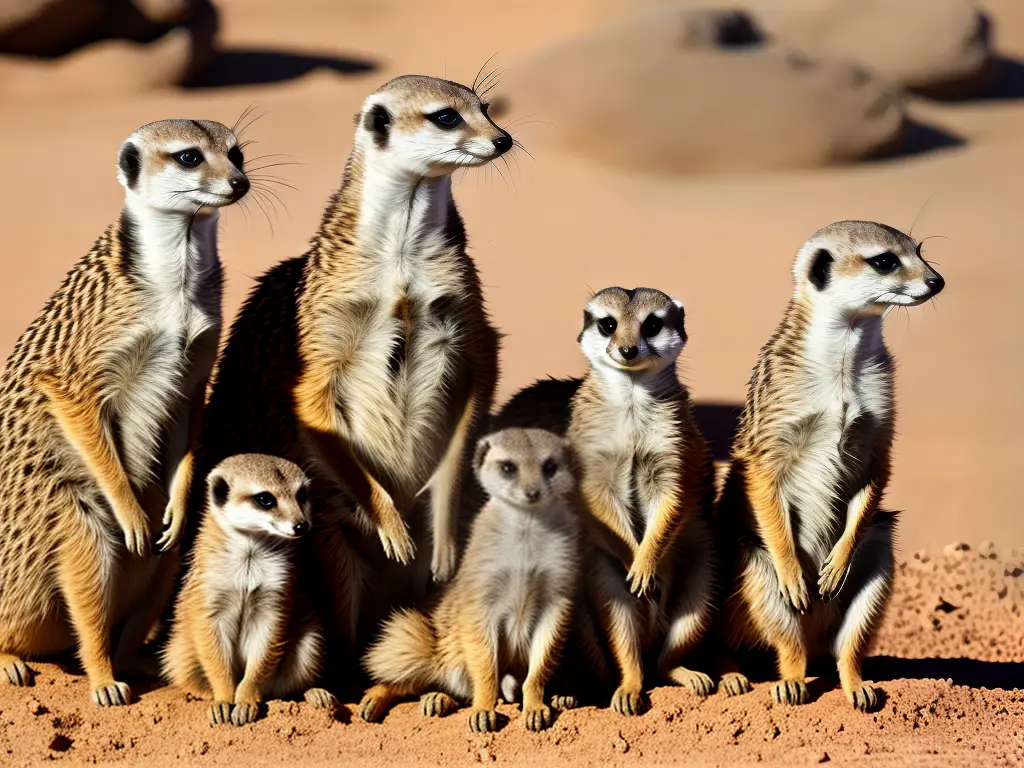
Meerkat Conservation for Kids
Reproductive behaviors can have an impact on meerkats’ life expectancy. For example, dominant females that can reproduce may have a higher chance of survival due to their central role in the group. On the other hand, subordinate individuals, who cannot breed and work as helpers, might have a lower life expectancy, being more likely to take risks in their protective roles or face challenges when attempting to find a new group where they can reproduce. Sadly, meerkats face many challenges in the wild, which is why conservation efforts are being made to protect them and help improve their life expectancy.
One of the main challenges meerkats face in their natural habitat is the loss of their homes. As humans expand into their territories for agriculture, mining, and other purposes, meerkats are losing the burrows and safe spaces they need to survive. In order to help protect meerkats, organizations and volunteers are working to create safe habitats and monitor meerkat populations closely.
Another challenge meerkats face is the threat of predators. To help reduce this risk, some conservation programs build artificial burrow systems, provide additional food sources (such as insects), and educate local communities about the importance of protecting meerkats and their habitats. When people in the community understand the value and uniqueness of these animals, they are more likely to support efforts to protect them.
By learning about and supporting meerkat conservation efforts, we can help improve their life expectancy and the overall health of their populations. In addition to protecting meerkats, these efforts also help preserve the delicate ecosystem of the African desert, benefiting many other species that share their home. As a child, you can get involved by educating yourself about meerkats, sharing information with others, and potentially even raising funds or volunteering to support conservation organizations.
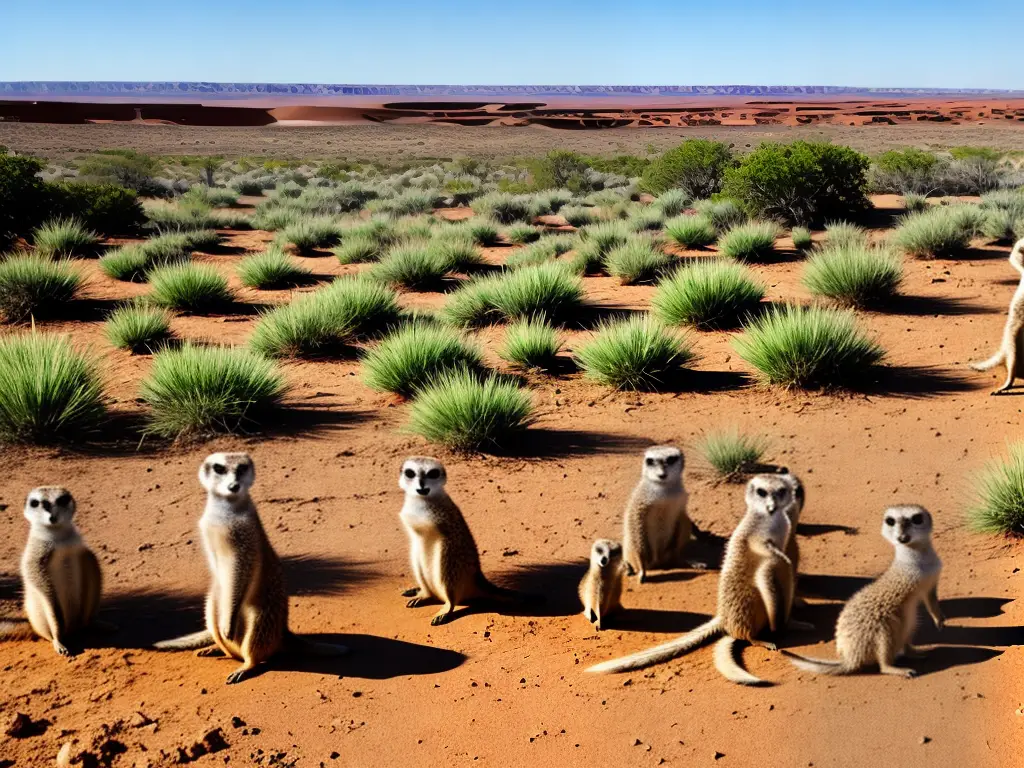
Having explored the various aspects of meerkat lives, including their habitat, diet, social structure, predators, reproduction, and conservation, it is clear that many factors contribute to their life expectancy. Understanding these aspects of their lives is imperative to helping maintain their populations in the wild and develop successful conservation strategies. By learning more about these intriguing animals and the challenges they face, we can all play a part in ensuring the survival of meerkats for generations to come.
